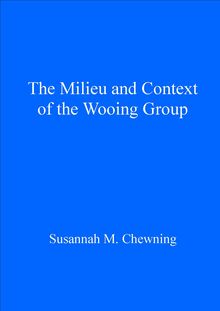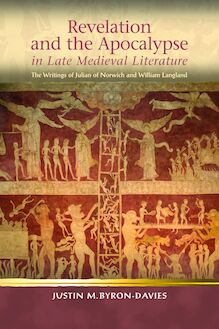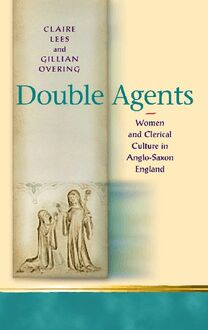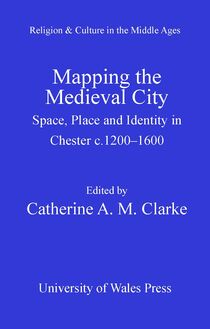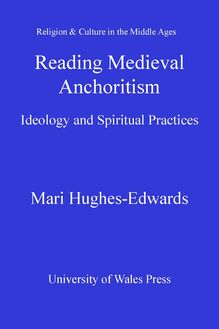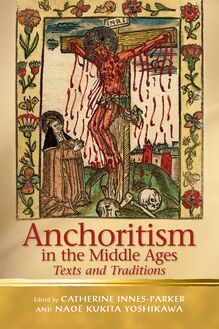-
 Univers
Univers
-
 Ebooks
Ebooks
-
 Livres audio
Livres audio
-
 Presse
Presse
-
 Podcasts
Podcasts
-
 BD
BD
-
 Documents
Documents
-
- Cours
- Révisions
- Ressources pédagogiques
- Sciences de l’éducation
- Manuels scolaires
- Langues
- Travaux de classe
- Annales de BEP
- Etudes supérieures
- Maternelle et primaire
- Fiches de lecture
- Orientation scolaire
- Méthodologie
- Corrigés de devoir
- Annales d’examens et concours
- Annales du bac
- Annales du brevet
- Rapports de stage
La lecture à portée de main
142 pages
English
Découvre YouScribe en t'inscrivant gratuitement
Je m'inscrisAn Introduction to the 'Glossa Ordinaria' as Medieval Hypertext , livre ebook
Découvre YouScribe en t'inscrivant gratuitement
Je m'inscris
Obtenez un accès à la bibliothèque pour le consulter en ligne
En savoir plus
En savoir plus
142 pages
English
Obtenez un accès à la bibliothèque pour le consulter en ligne
En savoir plus
En savoir plus

Description
The Glossa Ordinaria, the medieval glossed Bible first printed in 1480/81, has been a rich source of biblical commentary for centuries. Circulated first in manuscript, the text is the Latin Vulgate Bible of St. Jerome with patristic commentary both in the margins and within the text itself.
Introduction Chapter 1: The Glossing Tradition and the Glossa Ordinaria Chapter 2: History, the Text, and the History of the Text Chapter 3: Reading, Theory, and Reading Theory Chapter 4: Reading the Glossa Ordinaria: Genesis 1:1, 3:1, and John 1:1 Notes
Introduction Chapter 1: The Glossing Tradition and the Glossa Ordinaria Chapter 2: History, the Text, and the History of the Text Chapter 3: Reading, Theory, and Reading Theory Chapter 4: Reading the Glossa Ordinaria: Genesis 1:1, 3:1, and John 1:1 Notes
Sujets
Informations
| Publié par | University of Wales Press |
| Date de parution | 15 mai 2012 |
| Nombre de lectures | 1 |
| EAN13 | 9780708324950 |
| Langue | English |
| Poids de l'ouvrage | 2 Mo |
Informations légales : prix de location à la page 0,0950€. Cette information est donnée uniquement à titre indicatif conformément à la législation en vigueur.
Extrait
Religion & Culture in the Middle Ages
An Introduction to the Glossa Ordinariaas Medieval Hypertext
David A. Salomon
University of Wales Press
RELIGION AND CULTURE IN THE MIDDLE AGES
An Introduction to theGlossa Ordinariaas Medieval Hypertext
Series Editors Denis ReneVey (UniVersity of Lausanne) Diane Watt (UniVersity of Surrey)
Editorial Board Miri Rubin (Queen Mary, UniVersity of London) Jean-Claude Schmitt (École des Hautes Études en Sciences Sociales, Paris) Fiona Somerset (Duke UniVersity) Christiania Whitehead (UniVersity of Warwick)
RELIGION AND CULTURE IN THE MIDDLE AGES
An Introduction to the Glossa Ordinariaas Medieval Hypertext
DAvID A. SALOMON
UNIvERSITY OF WALES PRESS CARDIFF 2012
© DaVid A. Salomon, 2012
All rights reserVed. No part of this book may be reproduced in any material form (including photocopying or storing it in any medium by electronic means and whether or not transiently or incidentally to some other use of this publication) without the written permission of the copyright owner. Applications for the copyright owner’s written permission to reproduce any part of this publication should be addressed to the UniVersity of Wales Press, 10 Columbus Walk, Brigantine Place, Cardiff CF10 4UP.
www.uwp.co.uk
British Library CIP Data A catalogue record for this book is aVailable from the British Library.
ISBN e-ISBN
978-0-7083-2493-6 (hardback) 978-0-7083-2494-3 (paperback) 978-0-7083-2495-0
The right of DaVid A. Salomon to be identiïed as author of this work has been asserted in accordance with sections 77 and 79 of the Copyright, Designs and Patents Act 1988.
Typeset by Mark Heslington Ltd, Scarborough, North Yorkshire Printed by CPI Antony Rowe, Chippenham, Wiltshire
1 2 3 4 5
Series Editors’ Preface List of Illustrations Acknowledgements
Introduction
Contents
The Glossing Tradition and theGlossa Ordinaria
History, the TeXt, and the History of the TeXt
Reading, Theory, and Reading Theory
Reading theGlossa Ordinaria: Genesis 1:1, 3:1 and John 1:1
TheGlossa Ordinariaand HyperteXt
Notes Bibliography IndeX
Vii iX Xi
1
6 3 63 82 93
100 115 127
serieseditors’ PrefaCe
Religion and Culture in the Middle Ages aims to eXplore the interface between medi-eVal religion and culture, with as broad an understanding of those terms as possible. It puts to the forefront studies which engage with works that signiïcantly contributed to the shaping of medieVal culture. HoweVer, it also giVes attention to studies dealing with works that reect and highlight aspects of medieVal culture that haVe been neglected in the past by scholars of the medieVal disciplines. For eXample, deVotional works and the practice they infer illuminate our understanding of the medieVal subject and its culture in remarkable ways, while studies of the material space designed and inhabited by medieVal subjects yield new eVidence on the period and the people who shaped it and liVed in it. In the larger ïeld of religion and culture, we also want to eXplore further the roles played by women as authors, readers and owners of books, thereby deïning them more precisely as actors in the cultural ïeld. The series as a whole inVestigates the European Middle Ages, fromc.500 toc.1500. Our aim is to eXplore medieVal religion and culture with the tools belonging to such disciplines as, among others, art history, philosophy, theology, history, musicology, the history of medicine, and literature. In particular, we would like to promote interdisciplinary studies, as we belieVe strongly that our modern understanding of the term applies fascinatingly well to a cultural period marked by a less tight conïnement and categorization of its disciplines than the modern period. HoweVer, our only criterion is academic eXcellence, with the belief that the use of a large diVersity of critical tools and theoretical approaches enables a deeper under-standing of medieVal culture. We want the series to reect this diVersity, as we belieVe that, as a collection of outstanding contributions, it offers a more subtle representation of a period that is marked by paradoXes and contradictions and which necessarily reects diVersity and difference, howeVer difïcult it may sometimes haVe proVed for medieVal culture to accept these notions.
-
 Univers
Univers
-
 Ebooks
Ebooks
-
 Livres audio
Livres audio
-
 Presse
Presse
-
 Podcasts
Podcasts
-
 BD
BD
-
 Documents
Documents
-
Jeunesse
-
Littérature
-
Ressources professionnelles
-
Santé et bien-être
-
Savoirs
-
Education
-
Loisirs et hobbies
-
Art, musique et cinéma
-
Actualité et débat de société
-
Jeunesse
-
Littérature
-
Ressources professionnelles
-
Santé et bien-être
-
Savoirs
-
Education
-
Loisirs et hobbies
-
Art, musique et cinéma
-
Actualité et débat de société
-
Actualités
-
Lifestyle
-
Presse jeunesse
-
Presse professionnelle
-
Pratique
-
Presse sportive
-
Presse internationale
-
Culture & Médias
-
Action et Aventures
-
Science-fiction et Fantasy
-
Société
-
Jeunesse
-
Littérature
-
Ressources professionnelles
-
Santé et bien-être
-
Savoirs
-
Education
-
Loisirs et hobbies
-
Art, musique et cinéma
-
Actualité et débat de société
- Cours
- Révisions
- Ressources pédagogiques
- Sciences de l’éducation
- Manuels scolaires
- Langues
- Travaux de classe
- Annales de BEP
- Etudes supérieures
- Maternelle et primaire
- Fiches de lecture
- Orientation scolaire
- Méthodologie
- Corrigés de devoir
- Annales d’examens et concours
- Annales du bac
- Annales du brevet
- Rapports de stage
Signaler un problème
YouScribe
Le catalogue
Le service
© 2010-2024 YouScribe
